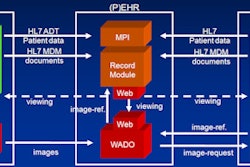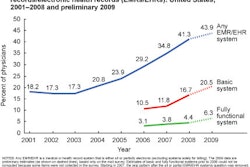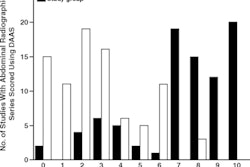The U.S. Department of Veterans Affairs' (VA) initiative to implement healthcare IT more than 20 years ago has paid off impressively. By 2007, the agency had saved a cumulative $3.09 billion, and it's currently saving nearly $700 million annually, according to a study published in the April issue of Health Affairs.
Partners HealthCare System's Center for Information Technology Leadership (CITL) in Charlestown, MA, commended the VA for its initiatives in an analysis undertaken to compare HIT investment and implementation between the VA and nongovernment healthcare enterprises. The study also estimated the financial value of key elements of the VA's Veterans Health Information Systems and Technology Architecture (VistA) (Health Affairs, April 2010, Vol. 29:4, pp. 629-638).
The researchers estimated the gross value of the VA's investment in VistA applications to be $7.16 billion, and its total cost for development, implementation, and operational expenses at $4.07 billion. The project's net benefits equaled its costs in 2003, and the VA has potentially been accruing a net positive value from VistA from 2004 through 2007. In 2007, the project's annual net value was estimated to be more than $687 million.
Using data derived from the VA's annual budget documents from 2001 to 2007, the research group determined that compared to private healthcare enterprises, the VA had a slightly higher ratio of total IT spending compared to total spending (4.76% for the VA versus 3.97% in the private sector). The agency's ratio of operations and management expenses for IT compared to total operations and management was also slightly higher than that of private healthcare enterprises, at 3.93% for the VA versus 2.45% for the private sector.
But the VA's slightly higher investment into and operation of healthcare IT systems has produced a nearly 100% adoption of key VistA components at its hospitals, outpatient clinics, and physicians' offices since 2004.
Compared to the VA's nearly universal adoption, only 61% of the private healthcare sector has implemented inpatient electronic health records and 12% of the private sector has implemented outpatient electronic medical records. Private health sector adoption of computerized physician order entry was 16%, and inpatient barcode medication adoption was 22%, according to the study's lead author, Colene Byrne, a senior analyst at CITL.
To evaluate the effects of healthcare IT on treatment quality, the authors focused on diabetes -- approximately 25% the VA's patients suffer from this condition. Based on diabetes-related measurements such as hemoglobin A1c testing and timely eye exams, the VA averaged about 15% higher than private hospitals on quality measures for overall preventive care for diabetic patients. The VA also averaged about 17% higher for diabetic patients with well-controlled cholesterol, the researchers estimated.
The largest source of benefit, estimated at 65%, was cumulative reduction in unnecessary care attributable to preventing adverse drug effect-related hospitalizations and outpatient visits. The authors valued this at $4.64 billion. They estimated a value of $1.92 billion for eliminating redundancies such as duplicative lab tests.
But the authors issued a caveat.
"We report the potential value that the VA could have obtained from its health IT investments based upon our model, but the extent to which the VA actually captured and realized these benefits could not be determined," they wrote.
The researchers then offset this statement by stating that the gross benefits are more likely an underestimate of the total value the VA had obtained from its long-term investments in health IT.
Pointing out that a set of standardized, validated health IT measures do not yet exist, the authors recommended that policymakers need the means both to compare progress based on system adoption and capabilities, and to link the progress to a standardized set of cost and quality outcomes.
By Cynthia E. Keen
AuntMinnie.com staff writer
April 13, 2010
Related Reading
Survey fails to find outcomes benefit for electronic records, April 12, 2010
Study: EMRs may be overhyped, December 15, 2009
No hospital savings with electronic records: U.S. study, November 23, 2009
Copyright © 2010 AuntMinnie.com



















